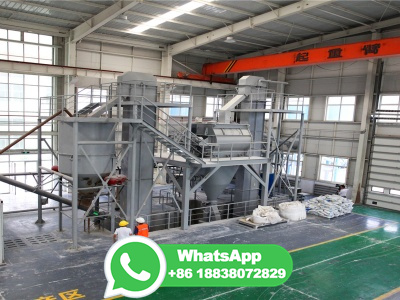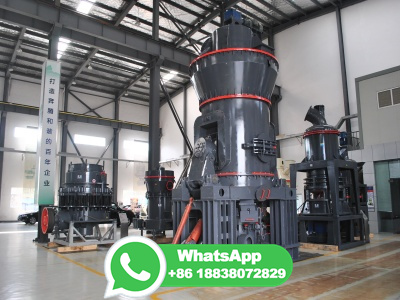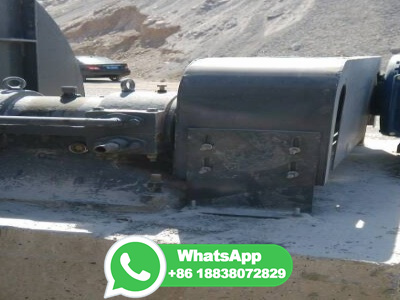
Chemicals from Coking Metallurgical Coal. Most of the chemicals derived from coal come from byproducts produced during the coking process. Coal is used to make coke to make steel. Coke gas (also called foul gas) contains coke tars, ammonia, and light oils. Tars are recovered and used to make tar derivatives. Ammonia is recovered as an aqueous ...
WhatsApp: +86 18203695377
The coking of coal J. W. Patrick Various aspects of the constitution of coal, in so far as they relate to the coking process, are described and it follows from this that the coking process can be subdivided into several distinct stages, the most important of which is considered to be that involving the development of plasticity.
WhatsApp: +86 18203695377
Converting to heat, coke, oil and gas are both new and old tasks of coaltechnologies. For many years, especially since the "oilcrisis'~ new techniques have been tested thereby the coal should be refined more economically and enviromentally friendly. Such technologies are among others as follows: Carbonization with coalpreheating or by for
WhatsApp: +86 18203695377
Semantic Scholar extracted view of "Coke oven gas to methanol process integrated with CO2 recycle for high energy efficiency, economic benefits and low emissions" by Minhui Gong et al. ... Methanol is predominantly produced by a coaltomethanol process in China. However, this process is criticized by high CO2 emissions because of the high ...
WhatsApp: +86 18203695377
According to the report from the "2022 BP World Energy Statistics Yearbook" [], the global coal consumption in 2021 reached EJ, accounting for % of the world's total energy consumption, and coal is thus still one of the most important fossil fuels for many countries, especially China and a type of highcarbon energy carrier, the conversion and utilization of coal ...
WhatsApp: +86 18203695377
efficient and clean coal technology. The most probable option is to convert coal into high quality, clean burning transportation fuel. There are two commercially demonstrated routes for converting coal to transportation fuels through gasification (Figure 1). The widely known FischerTropsch process was first discovered in the 1920s. It
WhatsApp: +86 18203695377
In this study, βSiC with elemental Si of varying amounts, formed from industrial carbon materials (charcoal, coal, and petroleum coke), were utilized to study the transformation of βSiC to...
WhatsApp: +86 18203695377
reaction from the gasification reactions serves to preheat the coal before it enters the gasification reaction zone. Consequently, the temperature of the syngas exiting the gasifier is significantly lower than the temperature needed for complete conversion of the coal. Fig. 2. Diagram of a generic moving bed gasifier
WhatsApp: +86 18203695377
combustion conversion rate. Coal gangue has the lowest conversion rate and shortest burning time, and the burnout temperature is about 805℃.With the increase of petroleum coke content in the mixed sample, the conversion rate gradually increases, the combustion curve of the mixed fuel moves to the
WhatsApp: +86 18203695377
Worldwide, the cokemaking process has remained more or less unchanged for over 100 years, and metallurgical coke is produced in recovery and nonrecovery coke ovens by using top gravity and stamp charging and a wide range of coal BFs have been operated with coke, it has been urged globally to reduce the coke cost more by maximization of cheaper/inferior coal in the blend.
WhatsApp: +86 18203695377
of coal and oil residue; 3. to compare coke yield from coal and oil residue; 4. to investigate the structure and composition of coke from FCC, tar and coal pitch; 5. to compare the coke to distillate yield of FCC, tar and coal pitch; 6. to propose a methodology for obtaining quality coke that can be used as anode or electrode.
WhatsApp: +86 18203695377
We have compiled the NCERT MCQ Questions for Class 8 Science Chapter 5 Coal and Petroleum with Answers Pdf free download covering the entire syllabus. Practice MCQ Questions for Class 8 Science with Answers on ... coke (c) coal gas (d) all of these. Answer. Answer: (d) all of these. ... Process of conversion of wood to carbon is called ...
WhatsApp: +86 18203695377
The cogasification behavior and synergistic effect of petroleum coke, biomass, and their blends were studied by thermogravimetric analysis under CO2 atmosphere at different heating rates. The isoconversional method was used to calculate the activation energy. The results showed that the gasification process occurred in two stages: pyrolysis and char gasification. A synergistic effect was ...
WhatsApp: +86 18203695377
This study analyzed the characteristics of BioCoke conversion from biomass abundantly found in Malaysia, which included rice husk, rubber wood sawdust, coconut husk, sugarcane bagasse, oil palm ...
WhatsApp: +86 18203695377
Abstract. Coal gasification is an important industrial process for converting raw coal into more useful and cleaner carbon feedstocks for use in power generation and as precursors for other transformations. Coal gasification involves complex heterogeneous physical and chemical changes that occur between coal and gaseous reactants.
WhatsApp: +86 18203695377
7 TMTS TERMINOLOGY x ppmvd: ppm, by volume, dry basis, water excluded. x acfm: Actual cubic feet per minute of a gas at measured temperature and pressure. acfm = scfm x ((T qF+460)/520) x (/P in psia) x scfm: Standard cubic feet per minute of gas ( 60 o F, psia) x dscfm: Dry scfm (scfm less water vapor). x AFT: Adiabatic flame temperature.
WhatsApp: +86 18203695377
This will only be possible with a better understanding of the fundamental aspects of the coking process. . properties of coals and their functions in the coaltocoke conversion. This understanding is also necessary because of the gradually increasing stringency of requirements made on coke by modem industrial practices. output ...
WhatsApp: +86 18203695377
Request fulltext PDF. ... The review concludes with an assessment of current coke production and coal demand in the steelmaking industry, globally, followed by a preview of possible future ...
WhatsApp: +86 18203695377
Download PDF. Vidya Cundasari Koesoemadinata 1 ... wood biomass BioCokes can be used in cupola furnaces as an alternative to coal coke. The production process of wood biomass BioCokes is the same as that of Bio ... the cultivation of microalgae together with BioCoke conversion of microalgae in tropical areas might show good advantages for ...
WhatsApp: +86 18203695377
This invention is directed to a process for converting coal into useful liquids, solids, and gases, by combined processes of coal carbonization and liquefaction in which the carbonization reaction yields hydrogen suitable for the liquefaction. The heavy liquid products from the liquefaction and the carbonization may be combined with the solid char to form a metallurgical coke.
WhatsApp: +86 18203695377
Introduction Coke making process under certain condition strongly depends on the composition and structure of parent coals. It is also related to organic properties of the coals influencing the subsequent coal pyrolysis and characteristics of volatiles released during the process.
WhatsApp: +86 18203695377
Therefore, it is believed that the radicals determine the coke formation of biooil to a great extend, as the coke is the solid product of biooil thermochemical conversion. Many studies have been done to explore the roles of radicals of coal [ 19, 20 ], coal tar and heavy oil [ 21, 22 ] during the thermochemical conversion processes.
WhatsApp: +86 18203695377
A windowedreactor prototype of internallycirculating fluidized bed is tested and demonstrated at laboratory scale for steam gasification of coal cokeirradiated directly by concentrated Xe light from a 3kW th sun bed material is composed of particle mixture of coal coke and quartz sand. A coal coke of the bed material works as a carbonous feedstock, while quartz sand functions ...
WhatsApp: +86 18203695377
Process flow sheet: Illustrated in Figure. Figure Flow sheet of coking of coal Functional role of each unit (Figure ): (a) Coal crusher and screening: At first Bituminous coal is crushed and screened to a certain size. Preheating of coal (at 150250˚C) is done to reduce coking time without loss of coal quality.
WhatsApp: +86 18203695377
Coke for the blast furnace 2. as a chemical reducing agent, it produces gases for. the reduction of iron oxides; and. Metallurgical coke is a macroporous carbon mate 3. as a permeable support, it acts as the only solid. rial of high strength produced by carbonization of material in the furnace that supports the iron.
WhatsApp: +86 18203695377
Coal gasification and coking to methanol (GCtM) is a newly developed and industrialized process in China. However, in the early stages, the idea of integration hardly applied to this process. To improve the degree of integration, this paper developed a coupling process of coproducing methanol and ethylene glycol. The key idea was to find an appropriate distribution of carbon and hydrogen ...
WhatsApp: +86 18203695377
Approximately 90% of coke is metallurgical, an indispensable input material for pig iron production (the base material of steel making). (Babich and Senk, 2019). Coke is produced in over 560 ...
WhatsApp: +86 18203695377
The purpose of coal conversion is the production of alternative fuels, including motor fuels, or the generation of a range of chemicals from coal by process routes, such as gasification, direct and indirect liquefaction, hydropyrolysis, and plasmapyrolysis. The application of these techniques is essential if the large reserves of coal are to be ...
WhatsApp: +86 18203695377
This chapter explores the technologies, applications, barriers and research challenges associated with gasification and conversion of coal for the production of high efficiency power, transport fuels, and chemicals. It considers some of the emerging technologies which aim to reduce costs and emissions associated with coal use.
WhatsApp: +86 18203695377
The activation energy of cogasification of petcokecoal mixture was found to be and kJ mol whereas that for petcoke alone was estimated to be and kJ mol, by KAS and FWO methods, respectively. The random nucleation mechanisms control the process of gasification for conversion values below
WhatsApp: +86 18203695377